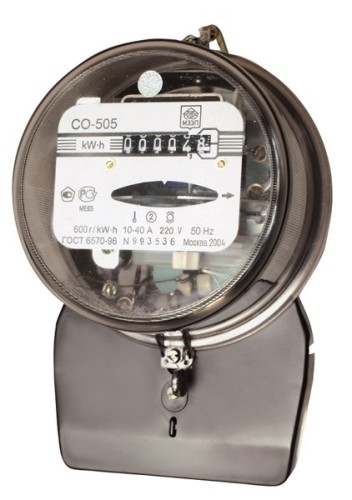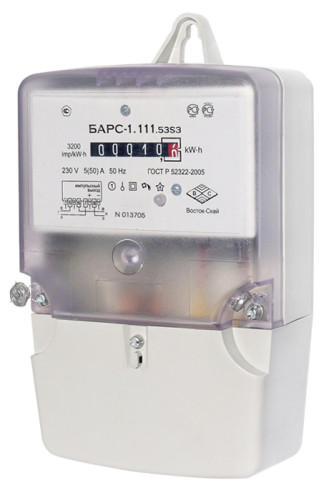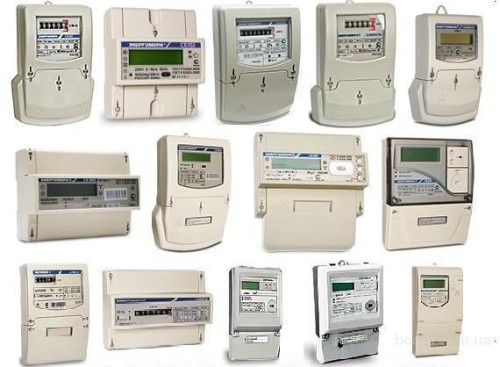
What to put electricity meter Lighting,Useful advice
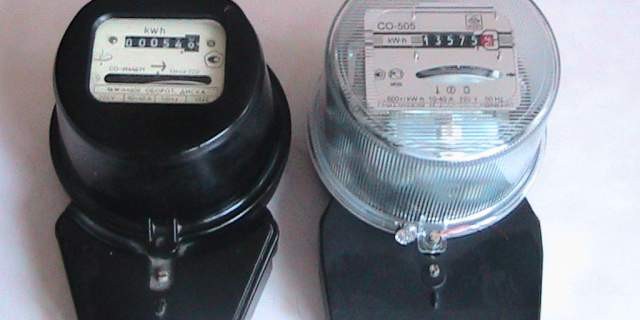
Installation of electrical energy accounting device requires a competent approach. Not all the counters are the same: they differ in design, by the class of accuracy, by the number of plug-in phases, according to the process of tarification. What to put electricity meter, how to make the right choice? Reply to these and other questions.
Content
- Classification of meters depending on the device
- Classification of meters by the number of connected phases
- Classification of tariff counters
- Energy classification
- General recommendations for the choice of electricity meters
- The best manufacturers of electricity meters
- How to connect the electric meter
Classification of meters depending on the device
All electrical energy meters are divided into two types:
- induction;
- electronic.
Induction electricity meter
The basis of the design of induction meters is an electromechanical device collected from the voltage coil, current coil, metal disk and counting mechanism. The principle of the device is as follows.
- When connecting the meter to the electrical network and connecting the energy consuming the device, two coils begin to interact with each other.
- There is a magnetic field that affects the disk, forcing it to rotate.
- The rotating disk transmits the movement of the axis, which, in turn, through the worm gear mechanism transmits the signal to the counting mechanism.
- The counting mechanism displays the amount of electricity consumed with an error corresponding to the instrument accuracy class.
The advantages of induction meters in the following:
- relatively low cost of the device;
- simplicity of service and maintainability;
- long service life.
The disadvantage is a high percentage of error: most models are class 2.5 and 2.0.
Electronic electricity meter
There are no mechanisms in the electronic meter (with the exception of the counting mechanism in some models). The principle of operation of such meters.
- The electric current is fed directly to the electronic circuit consisting of semiconductors and chips.
- Microcircuits measure the amount of electricity consumed by various devices.
- The measurement results are displayed on the scoreboard.
Advantages of instruments of this type:
- compactness and relatively low weight;
- higher accuracy of measurements;
- the presence of an electronic scoreboard;
- the ability to use to account for electricity consumption for several tariff plans;
- ability to program the transformation coefficient for accounting networks with current transformers;
- additional features (for example, remote or automatic switching on / off consumers).
The disadvantage of electronic counters is their high cost and difficulty in repair.
Before you buy an electricity meter, you should decide to the three-phase network will be connected or to single-phase. After that, it is necessary to find out the possibility of carrying out accounting on several tariff plans and in accordance with this select the electricity meter: the price of various models differs significantly differently.
Classification of meters by the number of connected phases
Instruments for accounting electricity consumed are single and three-phase.
- Single-phase meters: Electricity meter single-phase connected, respectively, to a single-phase network of 220 V, consisting of two wires. At the same time, electricity consumption should not exceed 10 square meters. The maximum current is taken into account on which the counter is calculated. For most models, it is 50 A.
- Three-phase electricity meters: accordingly, such devices are connected to a three-phase 380 V network, which can be three- or four-wire (with "zero" or without a "zero" wire). Most often, they are used at industrial enterprises and in networks of incorporating communal electricity in multi-storey residential buildings.
Classification of tariff counters
Distinguish the following types of metering devices.
- Single-racing is the most common appearance leading in one tariff plan. Used both in everyday life and production.
- Two-tariff - works in a two-way plan (day and night). Allows you to save funds to enterprises working in several shifts (the night tariff is significantly less than daytime). It is also installed in houses with an electrical heating system.
- Multi-tariff - maintains at the same time on several tariff plans.
Energy classification
In manufacturing enterprises, powerful electric motors produce reactive electricity entering a common network. For its accounting, reactive energy meters are needed sensitive to the reactive component. It helps save money. Jet energy takes into account only three-phase instruments.
General recommendations for the choice of electricity meters
When the counter is selected, you must be guided by the following rules.
- Initially, the type of network is determined. On the table (passport) of the old counter, you need to pay attention to the presence of designations: 220/230 B - for a single-phase meter, 230/400 V - for three-phase. Accordingly, a new meter must be the same type.
- You must consider which load should withstand the counter. Most often, the total load of all consumers in the usual house (apartment) does not exceed 50 A. if this is not enough (for example, when using the heating electrical system), a countable device is set to maximum current in the network 100 A. Check it possible at face value entrance machines.
- The number of tariffs determines the consumer depending on the mode of electricity consumption and installed equipment. The choice should be coordinated with the possibilities of the energy company.
- The counter is different. For boxes with a DIN rail, it is recommended to choose a device with an appropriate fastening. For outdoor installation, the models of Shchur-8, Schu-1N-9 and Biz (in the defense block) are better suited.
- Additional features (display illumination, operation from the built-in battery, the ability to measure the frequency of the network, instantaneous power, etc.) do not affect the operation of the counting device.
- Acquire the counter follows with a seal and prints in the passport confirming the compliance with the accuracy class declared by the manufacturer. It is necessary to pay attention to the date of the metrological calibration: the year and the quarter are displayed on a seal and prints, and in addition, in the passport indicate the exact date for the signing of the belief. The calibration date must correspond to the intermediate interval (from 6 to 16 years, depending on the instrument model). The meter after installation also sends the energy supply company.
- The accuracy class of the device must comply with the requirements of regulatory documents.
The best manufacturers of electricity meters
Among the many firms offering their electricity metering devices should be selected by such manufacturers.
- Stavropol "Engergomer" provides its products as Russia and some neighboring countries. The cost of instruments - within 13-330 euros.
- The manufacturer of Mercury meters is Incoteks LLC (production facilities are located in Russia and abroad). The company produces veche counters of types. Electricity meter "Mercury" three-phase is a complex and expensive device. The device is equipped with a COM port for connecting to a computer, which is convenient for programming the counter. Set such counters as a rule, in accounting networks of industrial enterprises.
- MZIP - Moscow Measuring Instrument Plant is engaged in the production of electricity meters along with another radio equipment.
How to connect the electric meter
Possessing elementary knowledge of electrical engineering, it will be not difficult to fulfill this task. Connection diagram for various accounting devices is almost the same. To connect, you must follow certain rules (consider on the example of a single-phase meter).
- We study the technical description to the instrument: the document necessarily contains a connection scheme. In addition, it should be reflected on the inside of the terminal cover.
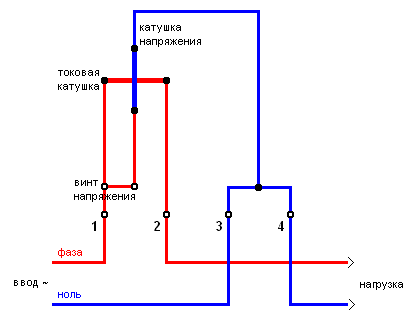
- Install the counter into the shield (distribution box), securely mounted on the wall. We bring down a de-energized incoming cable and an internal wiring wire into the shield. We define and note which veins will be connected to the phase, and which - to "zero".
- Connect the wires in accordance with the labeling: the inlet of the phase - terminal number 1, the output of the phase (to the consumer) - terminal number 2, the input of the zero conductor - terminal No. 3, the yield of zero - terminal No. 4.
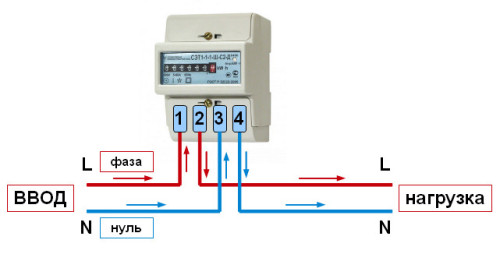
- After the installation, we invite a specialist from the energy company that checks the correctness of the connection and seelches the counter.
In conclusion, we suggest familiarizing yourself with the video about how the electrical meter is connected by experts.




